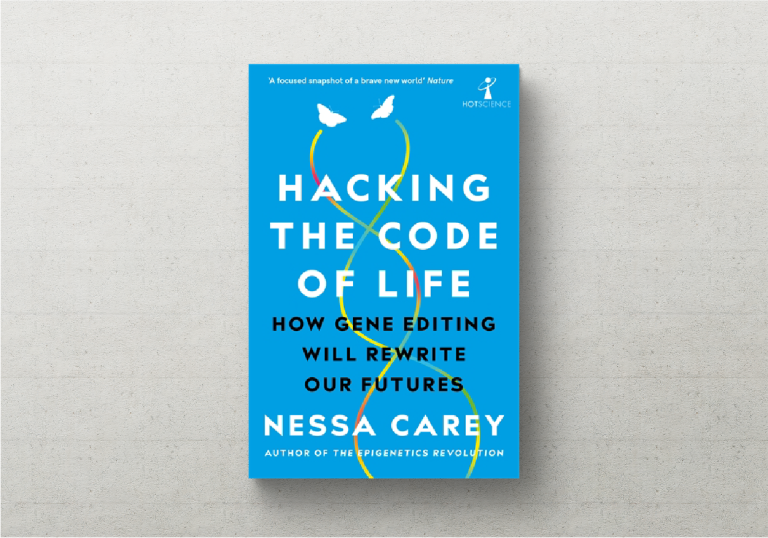An IHE Book Review: The Code of Life - How Gene Editing will Rewrite our Future
3 January 2024
We've got a new book review series to help introduce you to new concepts in healthcare engineering. Here's our review on ‘Hacking the Code of Life: How Gene Editing Will Rewrite our Future’ by Nessa Carey.

Healthcare engineering is complex and multi-faceted (as most things are). We want to do our bit to break down those barriers to knowledge – to help you understand a bit more about what we do and what healthcare engineering is. That’s why we’ve got our podcast, we have our events and now we have our book reviews. Every month or so, we’ll be writing a review on a book related to healthcare engineering. We hope this will inspire you to take the book out from your local library or bookstore, give it a read, and understand a bit more about healthcare engineering.
This time we’re featuring a short, small number called ‘Hacking the Code of Life: How Gene Editing Will Rewrite our Future’ by Nessa Carey. This book really is short, standing at only 112 pages, which is a good thing and a bad thing. Good because it’s accessible and easy to read but bad because it felt like there wasn’t as much detail as there could have been. There were some interesting concepts that would have been good to go more in-depth with.
In ‘Hacking the Code of Life: How Gene Editing Will Rewrite our Future’, Nessa Carey covers the progress and implications of gene editing, whether what we’re doing is ethical, who controls the applications of this technology and the very real threat of biohacking. Carey starts the book off quite dramatically with the story of Lulu and Nana, the first children born with changes to their genetic materials, deliberately altered by scientists. The DNA of these two girls had gone through genetic editing. Professor He, the Chinese scientist who announced their birth and who had adapted the techniques of IVF to edit the DNA of embryos, was met with condemnation and concern for his actions but the future of gene editing in humans is dubious. We might be able to gene edit serious diseases or conditions but we might also start having designer children.
Although the book is slim, you can still learn a lot from it – how gene editing works, the history of gene editing with mentions of Emmanuelle Charpentier and Jennifer Doudna, the potential for GM crops and animal agriculture and also the potential for treatment and how biological drugs like insulin are being made faster and cheaper from 60 years ago when insulin was being extracted from the pancreas of pigs. Now nearly all insulin is genetically modified from yeast or bacteria.
A great book helps you see the world differently and this helped me do that. Like a lot of people, I used to think that genetically modified foods were bad – it can’t be that great if it’s been ‘tampered’ with? But what this book taught me is that GM crops abide by the same principle as a farmer looking for the most desirable traits in their crops and planting only the ones with the most yield or the prettiest flowers. Carey uses the example of Golden Rice, which is an example of genetic modification. Golden Rice has vitamin A added to it, a lack of which leads to blindness, affecting an estimated 250,000 – 500,000 children every year, so, what’s the harm in genetically modifying rice to make sure those 250,000 – 500,000 children live more fulfilling lives?
This is a great book if you want an introduction to gene editing – it’s well-written and accessible. I enjoyed reading it and learning new things and if you’re like me and don’t know much about gene editing then you’ll probably enjoy it too!
Written by Ferdouse Akhter, Marketing and Community Manager
 Close
Close

